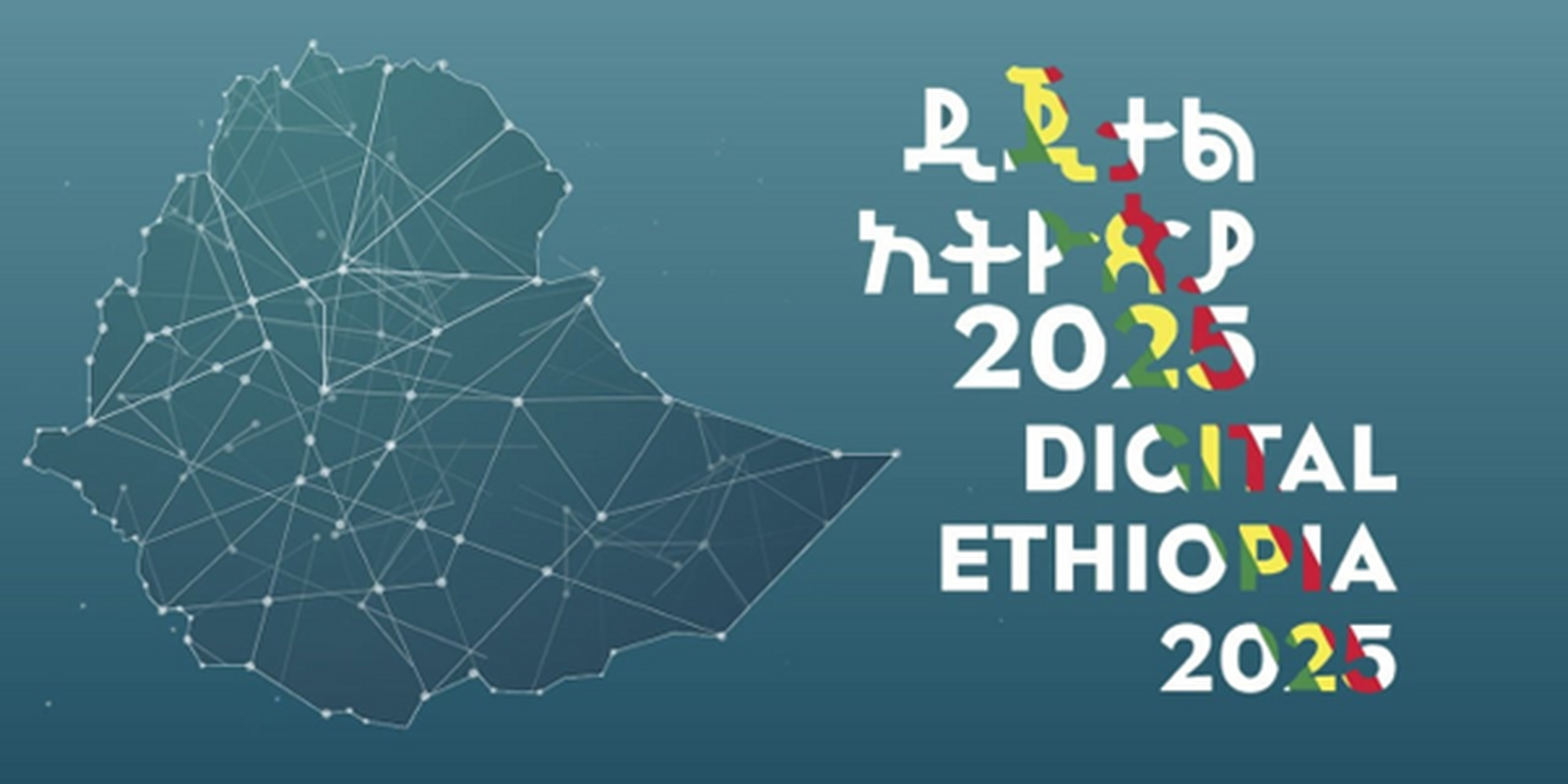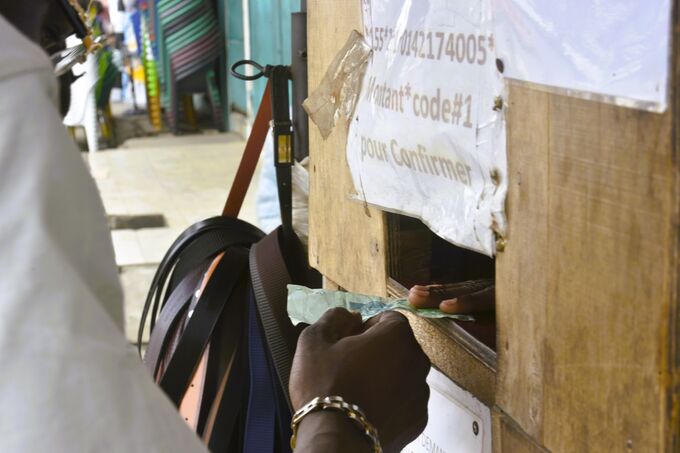
News
Ethiopia's Digital Payments Journey: Leveraging the National Digital Transformation Strategy 2025
by Tewodros Besrat, Technical Expert, Digital Payments - 25 June 2024

Ethiopia is embarking on a digital transformation journey that it hopes will enable it to achieve its development goals and drive inclusive prosperity. The National Digital Transformation Strategy, also known as 'Digital Ethiopia 2025', serves as the roadmap for Ethiopia's approach. One element is the digital payment eco-system. In this blog, we first offer background on the origins of Ethiopia’s efforts to drive digital payments, how the country has propelled exponential growth in digital payments over the past four years, and how Digital Ethiopia 2025 could continue that momentum.
2014: Piloting digital payments
Ethiopia began its digital payments journey in 2014 and 2015 when the country revised is emergency food aid scheme known then as the Rural Safety Net Project, a government cash transfer program, targeting the poorest of the poor across several regions within the country. The revised program piloted mobile money and biometric POS, with the hope of modernizing its payment system to more efficiently reach its more than eight million beneficiaries across eight regions, roughly Eight % of the population at that time. The pilot also aimed to improve financial inclusion for the poor and vulnerable. Although Ethiopia ’s policy and regulatory framework did not yet accommodate digital financial services and providers in a way that allowed them to flourish, it nonetheless triggered a ground-breaking shift in policy and regulation for the financial sector in general and the digital payments space in particular.
Policy and Regulatory Changes—2015-2024
The period from 2015-2024 saw several directives and regulations come into force related to financial services and payments, resulting in a complete overhaul of the sector. Their purpose was to address the country’s chronic challenges around financial infrastructure development and growth. These included:
- Limited connectivity in rural settings that made it difficult for vast majority of people to access digital payments)
- Low levels of literacy overall and financial literacy specifically among most of the populace
- Limited public trust in digital payment systems
- Lack of the necessary policy and regulatory framework to enable growth and expansion in digital payments.
In response, the government introduced complementary policy, regulatory, and operational changes. These included, but were not limited to:
- The endorsement of the payments instrument issuers directive of 2020, which paved way for the introduction of mobile money, digital wallets and similar digital financial services in Ethiopia. The directive also introduced tiered KYC to allow non-deposit taking institutions to leverage a less stringent process to accommodate potential low and medium value accounts in contrast to the stringent account opening requirements that banks use.
- The passing of a new directive for payment operators, which paved the way for new players to start offering payment switching, ATM and POS operation, and online payment gateway services.
- The development and launch of a national transaction switch (Eth-Switch) that enabled interoperability between and among different types of financial service providers (e.g., banks, MFIs, and fintechsechs).
- The opening of the Ethiopian financial sector to mobile network operators (MNOs) and fintech's.
- The opening of the MNO and mobile money space to foreign companies such as Safaricom with its M-PESA mobile money service.
- A government-wide initiative to expand the use of person-to-government (P2G) and government-to-person (G2P) digital payments for fuel purchases, utility bills, and cash transfer programs.
- The roll-out of Ethiopia’s National ID program (Fayda) with financial sector use cases.
The opening-up of the financial sector to international financial service providers.

Digital payments in the wake of reforms
According to Resilient Digital Africa (2024), digital financial transactions have been growing rapidly in Ethiopia since 2019 in terms of both volume and value of transactions across all channels, including ATM, POS, mobile banking, and internet banking. As of June 2023, end users in Ethiopia had made digital payments worth more than Birr 4.7 trillion (equivalent of US $82 Billion). That is three times the value made in 2022. The number of digital transactions reached 1.2 trillion.
The report highlights that P2P transactions have seen the most explosive growth. As of June 2020, there were no digital P2P (Person-to-Person) transactions happening through the available channels of the time, but by June 2023, there were over 14 million transactions worth Birr 113.3 billion (US $2 Billion). Furthermore, mobile money has shown the greatest growth in number of transactions, with a six-fold increase in just one year, from 48 million transactions in 2022 to 298 million transactions in 2023. While we cannot know for sure that the regulatory changes caused the growth in digital payments, these results suggest that policy and regulatory changes play an enabling role in the financial sector.
Applying the Digital Transformation Strategy to enable the digital payments eco-system in Ethiopia to flourish
The Digital Transformation Strategy adds a sense of urgency, stakeholder mobilization, and coordination of the ongoing initiatives to develop the payments ecosystem and enable financial inclusion. The strategy, informed by a digital economy gap assessment and stakeholder engagement, aligns with Ethiopia's national development vision and priorities. A key goal is to enhance Ethiopia's digital readiness.
This involves strengthening existing infrastructure, such as connectivity and power, developing enabling systems like digital ID, digital payments, and cybersecurity, and facilitating digital interactions between the government, the private sector, and citizens through e-government services and e-commerce platforms. Additionally, the strategy aims to strengthen the broader digital ecosystem to improve access to capital investment, human capital, and regulatory frameworks. The strategy also identifies sector-specific pathways to drive digital growth in the modern economy. These pathways include unlocking the potential of agriculture, advancing the global value chain in manufacturing, developing IT-enabled services, and leveraging digital technology as a driver of tourism competitiveness.
To bridge the connectivity gaps and achieve digital transformation goals, the strategy has identified 22 projects over the short, medium, and long term. Designated institutions and stakeholders will lead these projects to ensure accountability and efficient implementation.
Separate from the Digital Transformation Strategy yet concurrent with it, Ethiopia has also been committed to enhancing financial inclusion through the National Financial Inclusion Strategy (NFIS). The initial strategy was developed in 2017 by the National Bank of Ethiopia and already correlated with an increase in the percentage of the adult population with a bank account, from 22% in 2014 to approximately 45% in 2022. Building upon the achievements of the initial strategy, the NFIS is entering a new phase with the support of the Bill & Melinda Gates Foundation. Now known as NFIS-II, the strategy execution is expected to take place from 2021 to 2025 and emphasize digital financial services as a crucial driver of financial inclusion. The strategy also considers mobile money services and other digital financial products instrumental in achieving the four strategic priorities: digital financial inclusion, financial inclusion for underserved areas, financial inclusion for women, and promotion of Sharia-compliant financial products. The strategy adopts a three-step approach to financial inclusion, including scale, depth, and education.
On the topic of scale, the NFIS-II aims to increase formal financial account ownership among adults from 45% to 70% by 2025. The strategy focuses on various supply-side targets, such as growing the number of transaction accounts per 100 adults, reducing regional account ownership gaps, and increasing the number of micro-insurance policies. On the demand side, targets include increasing digital payments usage, reducing account ownership gaps, and promoting formal savings through approaches that include, designing and piloting dedicated financial access approach and expansion of traditional financial infrastructures such as Bank and MFI branches. The National Bank of Ethiopia is driving the implementation of the NFIS-II, with the National Council for Financial Inclusion serving as the main decision-making body accountable for financial inclusion progress. A governance structure comprising a Financial Inclusion Steering Committee and Regional Council for Financial Inclusion aims to enable effective coordination and implementation.
Ethiopia's National Digital Payments Strategy (NDPS) for 2021-2024 further propels the digital payments agenda. The NDPS aims to modernize the country's retail payment system, promote financial inclusion, and create a cash-lite economy. It is aligned with the government's broader reform agenda and the Financial Sector Reform Strategy. The NDPS includes four strategic pillars: developing inclusive infrastructure, driving adoption of digital payments, establishing robust regulations and oversight, and fostering an enabling environment for innovation. Enablers such as efficient payment systems, capacity-building initiatives, coordination with national policies, and robust governance and monitoring support these pillars.
Accordingly, digital financial services providers like Tele-birr, M-PESA Kacha, Hello Cash, Amole, CBE Birr, and others are revolutionizing the way people in the country access financial services, particularly in areas where traditional banking infrastructure is limited. With digital wallets and mobile payment solutions, individuals can securely store and transfer money using their mobile phones. In Ethiopia, these platforms have opened new avenues for people who did not previously have transactional accounts to participate in the formal financial system, thereby promoting financial inclusion. They provide a way for individuals to save money, make payments, and access credit, creating the potential for them to manage their finances more effectively.
These digital financial services also have the potential to drive economic growth and facilitate entrepreneurship. Small businesses, farmers, and rural communities have more opportunities to access affordable and convenient financial services, such as loans and insurance, to support their business activities. Additionally, the ability to send and receive money digitally can facilitate the potential growth of the e-commerce sector and enhance trade within the country, thereby creating new opportunities for businesses and promoting economic development. The NDPS not only aims for short-term benefits but also aligns with global knowledge on how digitization can contribute to stronger, safer, fairer communities, and a more sustainable environment (UNDP, 2023).
Looking Forward
The outlook for the growth and advancement of Ethiopia’s digital payments eco-system appears more promising than ever. Given that the government has implemented numerous reforms in policies and regulations, the private sector is also making significant strides by introducing innovative products and services to the market.
As a result, the digital payments ecosystem in Ethiopia has become more dynamic due to recent changes in policy and regulation. The successful implementation of the National Digital Transformation Strategy, along with the newly updated National Financial Inclusion Strategy (NFIS-II) and the National Digital Payments Strategy (NDPS), is expected to catalyze the Ethiopian digital economy. These initiatives will
not only enhance financial inclusion but also modernize the country's digital payments ecosystem, positioning Ethiopia as a leading hub for digitization on the continent.


